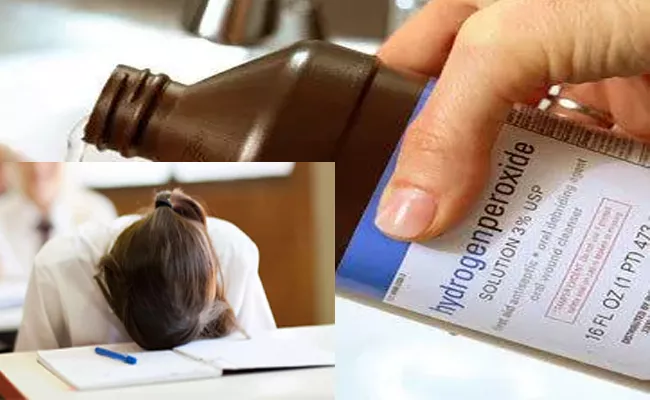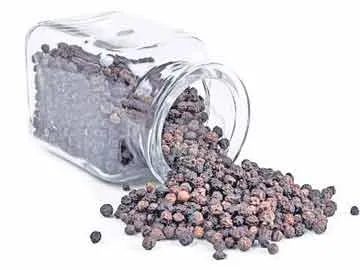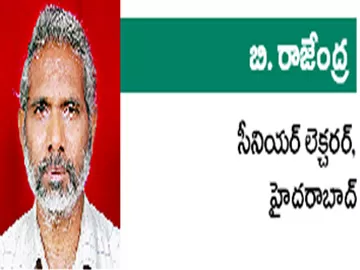కిరణజన్య ప్రక్రియ సమయంలో...
Eamcet
Botany
Unit-I [Physiology]
In the next part of the series of EAMCET model papers Second year syllabus is being discussed. In second year entire Unit-I (Physiology) is being considered as one part for convenience. It consists of six chapters ie Transport in Plants, Mineral Nutrition, Enzymes, Photosynthesis, Respiration and Plant growth.
From this entire Unit 6-8 questions are possible. Equal importance must be given to each chapter. Though difficult to understand the concept with vague presentation difficult questions are not expected from this Unit. More importance must be given to Mineral Nutrition and then to Transport in plants.. Here are some model questions from these chapters.
Some model questions from Unit- I of Second year
1. The instrument 'crescograph' can be used in measuring
1) Ascent of sap in plants
2) Water movement across a membrane
3) Turgidity of cells
4) Growth of a plant
2. False statement regarding transport phenomena in plants is
1) Transport in xylem is unidirectional
2) Transport in phloem is multidirectional
3) Transport of mineral nutrients is multidirectional
4) Hormonal movement is in all directions
3. Movement of water from soil into the intercellular spaces of the roots is
1) Diffusion 2) Osmosis
3) Mass flow 4) Imbibitions
4. The diffusion of any substance across a membrane depends on
A. Membrane constituents
B. Solubility in lipids
C. Concentration gradient
D. Surface area of the membrane
1) A & B 2) B & C
3) A, B, C 4) A, B, C, D
5. Assertion (A): Facilitation diffusion cannot take place from low to higher concentration
Reason(R): Facilitation diffusion is a passive process
1) Both A and R are true and R is the correct explanation of A.
2) Both A and R are true but R is not the correct explanation of A.
3) A is true, R is false
4) A is false, R is true
6. True statement regarding protein channels in the membrane is
1) Some channels are always open
2) Large molecules are not allowed to pass through
3) Channels cannot be regulated
4) One channel always allows only one kind of molecules
7. Basis for K+ pump theory is
1) Light
2) K+ ions accumulation
3) Cl ion accumulation
4) Temperature in atmosphere
8. 'Mouse ear' in pecan is due to
1) Toxicity of Nickel
2) Deficiency of Nickel
3) Deficiency of Boron
4) Toxicity of Magnesium
9. Activator of IAA oxydase
1) Mn 2) Mg 3) Mo 4) Ca
10. Frankia can cause nodules on
1) Roots of Leguminous plants
2) Roots of non-leguminous plants
3) Leaves of dicot plants
4) Leaves of monocot plants
11. Infection thread extends up to and into
1) Endodermis 2) Cortex
3) Stele 4) Vascular bundles
12. True statement regarding Rhodospirillum is
1) It is photosynthetic bacteria
2) It is anaerobic bacteria
3) It is a nitrogen fixing bacteria
4) All the above
13. Vitamins that we take as dietary supplement act as
1) Energy providers 2) Enzymes 3) Catalysts 4) Co-enzymes
14. Hydrogen peroxide can be deg-raded into water and oxygen by
1) Catalase 2) Hydrogenase
3) Oxygenase 4) Oxyhydrolase
15. True statement regarding co-enzyme
1) All co-enzymes are organic in nature
2) Some enzymes are tightly bound to apoenzyme
3) Some co-enzymes participate only during catalysis
4) All the above
16. Enzymes catalyzing inter conversion of atoms of molecules are grouped under
1) Hydrolases 2) Lyases
3) Isomerases 4) Ligases
17. Enzymes catalyzing AX + B« BX + A can be grouped in major class
1) 1 2) 2 3) 4 4) 5
18. The correct sequence of enzymatic reaction according to Lock-Key hypothesis
A. Formation of active site
B. Binding of substrate to active site
C. Formation of [EP] complex
D. Conformational change in the enzyme
E. Breaking of chemical bonds
F. Releasing of enzyme and product
1) A B D E C F 2) B D E C F
3) B E D C F 4) D E B CF
19. The approximate inverse measures of the affinity of the enzyme for a given substrate is called as
1) Activation energy of an enzyme
2) Rate of the enzymatic reaction
3) Michaelis-Menton constant
4) Feedback inhibition
20. False statement regarding enzymes is
1) Enzymes never changes the equilibrium of a reaction
2) Rate of reaction varies from enzyme to enzyme
3) Rate of the reaction of an enz-yme varies from time to time
4) Enzyme cannot start the reaction
21. Glucose-6- phosphor tranferase enzyme code is
1) (EC) 2.7.1.2 2) (EC) 2.5.1.6
3) (EC) 2.1.7.2 4) (EC) 4.7.1.2
22. Match the following
List - A
1. Internode elongation
2. Xylem differentiation
3. Improve apple shape
4. Production of new leaves
List- B
I : Gibberellic acid
II: Gibberellin III: Ethylene
IV: Auxin V: Cytokinin
A B C D
1) I IV III V
2) II IV I V
3) II V III I
4) I II IV III
23. Connecting link of glycolysis and citric acid cycle is
1) Pyruvic acid
2) Oxalo acetic acid
3) Acetyl Co-A 4) Citric acid
24. Net ATP released in the formation of lactic acid from glucose
1) 2 2) 7 3) 4 4) 6
25. True statement regarding glycolysis is
A. No oxygen is used in this process
B. Glucose does not undergo oxidation
C. Carbon dioxide is released in the process
D. DHAP cannot participate in oxidation reaction
1) A & B 2) A & C
3) C & D 4) A & D
26. Energy currency of living plant cell is
1) Glucose 2) ATP
3) ATP & NADH2 4) Starch
27. ATP formation in respiration is associated with
1) Electron transport
2) Formation of H2O
3) CO2 release
4) Phosphorylation of glucose
28. Substrates requires for the formation of malic acid in Kreb's cycle
1) Succinic acid & FAD
2) Succinic acid & NAD
3) Fumaric acid & H2O
4) Oxaloacitic acid & NAD
29. Number of ATP released in substrate level phosphorylation in anaerobic respiration
1) 2 2) 4 3) 3 4) 6
30. A physic-chemical process occurring in plants leads to the formation of
I. Sugar II. O2
III. ATP IV. NADPH2
1) Only I 2) I & II
3) I, II & III 4) I, II, III & IV
31. Cornelius von Neil experimented with
1) Photoautotrophs
2) Chemoautotrophs
3) Photoheterotrophs
4) Chemoheterotrophs
32. Assertion (A): Chlorophyll 'a' is the chief pigment of the photosynthesis
Reason (R): It absorbs light energy at different wave lengths.
1) Both A, R are true and R is the correct explanation of A.
2) Both A, R are true but R is not the correct explanation of A.
3) A is true but R is false
4) A is false but R is true
33. True statements regarding light reactions
I. Light reactions are photochemical reactions
II. Light harvesting complexes are pigments with proteins
III. Absorption peak of PS II is 700nm
IV. Chlorophyll 'a' is part of the antenna
1) I & II 2) II & III
3) III & IV 4) IV & I
34. During the process of photosynthesis
1) Acidity increases in the stroma
2) pH decreases in the lumen
3) ATP forms in the lumen
4) Electrons move from PS I to PS II
35. During the non-cyclic photophosphorylation
1) PS I and PS II work in series
2) Only ATP is released
3) One photon of light energy is sufficient for excitation of two electrons
4) Cytochrome do not participate
36. Assertion(A): Decapitated coleoptiles will not respond to unilateral light
Reason(R): Source of auxins is removed by decapitation
1) Both A and R are true and R is the correct explanation of A.
2) Both A and R are true but R is not the correct explanation of A.
3) A is true, R is false
4) A is false, R is true
Key
1) 4 2) 3 3) 1 4) 4 5) 1
6) 1 7) 2 8) 2 9) 1 10) 2
11) 2 12) 4 13) 4 14) 1 15) 4
16) 3 17) 2 18) 2 19) 3 20) 3
21) 1 22) 3 23) 3 24) 1 25) 4
26) 2 27) 1 28) 3 29) 2 30) 4
31) 1 32) 2 33) 1 34) 2 35) 1
36) 1






